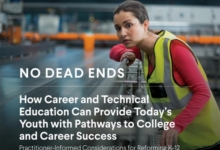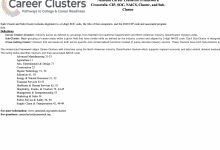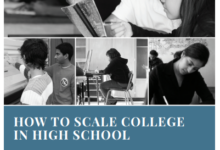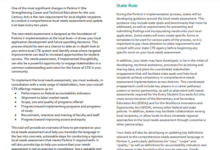On average, San Jacinto College, located in Texas, loses about 8,000 students per year through attrition. Nationally, the graduation rate for community colleges is at a dismal 28 percent. The typical college experience has been described by the Community College Research Center (CCRC) as having the structure of a cafeteria – though there are many programs, services and activities available, it is often left to the learner to make the choices that will lead them to successful program completion and entry into the workforce.This structure has led to an environment where learners are not set up for success.
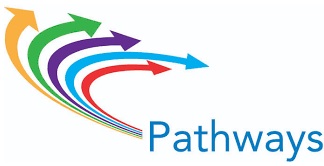 |
| Retrieved from AACC Pathways Project |
In response to these trends, San Jacinto College followed about 250 other communities colleges and implemented a guided pathways model in 2015. The guided pathways model is a total redesign of how community colleges work, with the main objective of improving learner completion rates. San Jacinto College is one of 30 community college participants in the Pathways Project, coordinated by the American Association of Community Colleges (AACC) beginning in 2016. The CCRC worked with the AACC to distill the guided pathways model into four main practice areas:
- Mapping pathways to learner end goals
- Helping learners choose and enter a program pathway
- Keeping learners on a path
- Ensuring that learners are learning
The majority of the 30 community colleges involved in the Pathways Project did not previously have a system of guided pathways. All participating community colleges were chosen because they demonstrated an openness to organizational change, and agreed to implement a guided pathways model by the fall of 2018. After one year with the Pathways Project, the AACC has reported that all colleges have found unique methods of following the four guiding principles to meet the needs of their students.
Under the guided pathways framework, San Jacinto College categorized its 144 total degree and certificate programs into eight meta-majors that align with the 16 Career Clusters ®, as well as the Texas Legislature’s five endorsed career areas. A program mapping team comprised of staff and faculty from each meta-major planned out a trajectory for each program that will lead the student through educational attainment to career opportunities after graduation. The teams overseeing Career Technical Education (CTE) programs are also responsible for tracking jobs in that area, demand for types of certificates and degrees and standard salary details. CTE programs that do not lead to a career with “family-supporting wages” are cut from the college. The college also mapped out pathways for the five most common transfer programs, so that students can easily understand what courses will transfer to a future institution. This support was established after faculty and staff realized that too many students were graduating with an associate’s degree comprised of credits that could not be transferred.
Policy in Action
Once implemented, a large shift occurred in the way in which San Jacinto College thought about program outcomes. In the past, the focus has been on how individual courses should guide the outcomes of the program at large. Now, the college first defines the goal outcomes of the program, and then decides what courses fit that program’s map. This has led to the elimination of some courses, and the redesign of others.
The Texas Legislature set a goal for at least 60 percent of those between 25 and 34 years old to have a college degree or certificate by 2030. Per a 2018 report, that number is currently at 42.3 percent. Strategic implementation of a guided pathways model will help the state achieve its attainment goal.
Related Links
- Advance CTE: CTE and Student Success Initiatives
- AACC: Pathways Project Website
- Association of American Colleges & Universities: Guided Pathways at Community Colleges: From Theory to Practice
- Community College Resource Center: Implementing Guided Pathways: Early Insights from the AACC Pathways Colleges
- Pathways Project: Website and Resources
Last Updated January 2020

